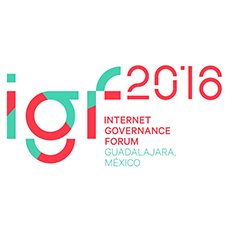Exploring demand side drivers of internet adoption
6 Dec 2016 11:45h - 12:45h
Event report
[Read more session reports and live updates from the 11th Internet Governance Forum]
The workshop organised by Sharada Srinivasan, Research Fellow, University of Pennsylvania and Christopher Yoo, University of Pennsylvania, gathered experts with experience on how to increase Internet access by overcoming demand side barriers (the obstacles of users). These experts developed principles and ideas that stakeholders can use to increase Internet access, especially in rural areas and low and medium income countries.
Yoo started the session by stating that both he and his colleague are involved in a project called 1 World Connected, in which they study innovative approaches to connecting people to the Internet. He noted that surveys show that pricing and availability of Internet access are not a major hindrance to connectivity, but that many people are not connected because they do not see the need to be connected.
Paul Mitchell from Microsoft presented a Nairobi project where solar power was used to connect people and schools to the Internet in areas that have no electricity. Microsoft worked with teachers to integrate ICT devices in their teaching and also collaborated with the government on addressing these initiatives. Grants were provided to entrepreneurs with good ideas that could benefit the population. He added that this project could be replicated in other parts of the world to increase access.
Manu Bharadwaj, US Department of State, talked about the state of connectivity in the USA. 90% of the population is covered by local broadband but only 50% is online. Considering that the Internet is the key to achieving the SDGs, the US has launched the Global Connectivity Initiative, which provides many sources of funding to support initiatives that can increase access.
Ellen Blackler, The Walt Disney Company, said that around the globe, 30% to 50% of the people in developed countries and 55% to 75% of the people in emerging markets that have access to the Internet, do not use it. Research shows that the reasons for this are:
- They do not see its importance
- They do not know how to use it
- It is not affordable
She added that they have struggled to address this issue at Walt Disney by looking at what people do online. They found that entertainment content and local languages online can increase access.
Sonia Jorge, The Alliance for Affordable Internet, insisted that access can be increased by addressing gender equality problems by encouraging more women to go online and by pin-pointing specific things that need to be done in order to bring the marginalised groups online. She added that focus should be on increasing the opportunities that access can bring.
Alejandro Pisanty, National University of Mexico, disagreed with the previous idea that content should be the major driving force to access. He stated that focus should be on the value added by being connected. He used an example where a student in Mexico is sponsoring herself through advertising and getting her customers via social media.
by Foncham Denis Doh, Internet Society Cameroon
Related topics
Related event

